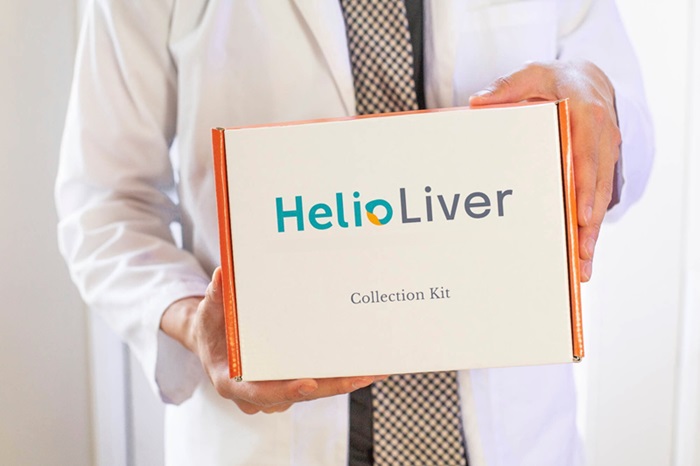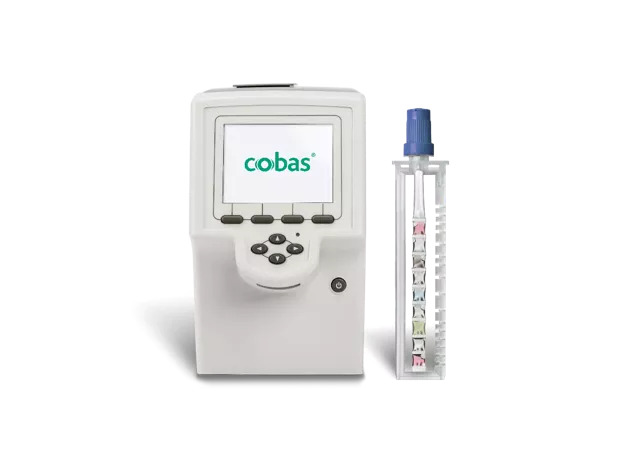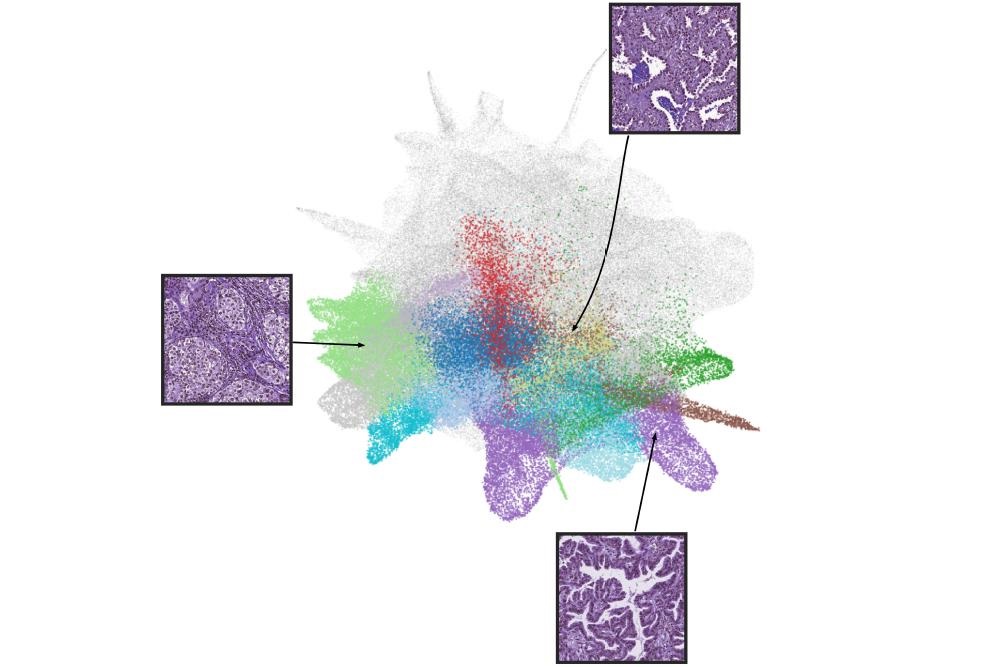Biomarker of Early-Stage Lung Cancer Identified
|
By LabMedica International staff writers Posted on 15 Dec 2015 |

Image: Histopathology of non-small-cell lung cancer (Photo courtesy of the Center of Genome Pathology).
A biomarker that detects the most common lung cancer in its earliest stage has been identified and this discovery could one day change how long lung cancer patients live.
Non-small-cell lung cancer (NSCLC) carries a poor survival rate mainly due to metastasis; however, the molecular mechanisms that govern NSCLC metastasis are undescribed, though NSCLC accounts for about 85% of all lung cancers.
Scientists at the National Cheng-Kung University (Tainan, Taiwan) by examined lung tissue from 121 patients. They investigated role of Huntingtin interaction protein-1 (HIP1) in lung cancer progression and metastasis, the cause of most lung cancer deaths. In addition to serving as a biomarker, the team found, HIP1 represses the mobility of lung cancer cells in laboratory studies and suppresses metastasis in a mouse model of the cancer.
The investigators found that those in the earliest stages of the diseases expressed more HIP1 than those in the later stages of the disease. They also studied the correlation between HIP1 expression in early stages of the disease (stage I-II), and found a significant correlation between those patients who expressed higher levels of HIP1 and longer survival, indicating that HIP1 was a prognostic biomarker. They also studied the correlation between HIP1 and cellular mobility in vitro and in a mouse model of adenocarcinoma.
In the laboratory, they found that HIP1 expression was inversely associated with cancer cell mobility. They confirmed those results in their mouse model. High levels of HIP1 expression were significantly associated with fewer metastatic tumor cells. Then they investigated the mechanisms behind HIP1's ability to suppress cellular mobility and metastasis. They found that HIP1 modulates the serine/threonine-specific protein kinase B (Akt) that regulates the epithelial-mesenchymal transition, which in turn facilitates cell invasion and the beginning of metastasis.
Pei-Jung Lu, PhD, a professor of medicine and senior investigator of the study, said, “If we can restore HIP1 levels and functions, we may be able to stop or prevent human lung cancer metastasis in the early stage. To bring this discovery to clinical care, we now need to identify the regulatory factors of the HIP1 gene that are targetable through gene therapy or small molecule interventions.” The study was published on November 23, 2015, in the American Journal of Respiratory and Critical Medicine.
Related Links:
National Cheng-Kung University
Non-small-cell lung cancer (NSCLC) carries a poor survival rate mainly due to metastasis; however, the molecular mechanisms that govern NSCLC metastasis are undescribed, though NSCLC accounts for about 85% of all lung cancers.
Scientists at the National Cheng-Kung University (Tainan, Taiwan) by examined lung tissue from 121 patients. They investigated role of Huntingtin interaction protein-1 (HIP1) in lung cancer progression and metastasis, the cause of most lung cancer deaths. In addition to serving as a biomarker, the team found, HIP1 represses the mobility of lung cancer cells in laboratory studies and suppresses metastasis in a mouse model of the cancer.
The investigators found that those in the earliest stages of the diseases expressed more HIP1 than those in the later stages of the disease. They also studied the correlation between HIP1 expression in early stages of the disease (stage I-II), and found a significant correlation between those patients who expressed higher levels of HIP1 and longer survival, indicating that HIP1 was a prognostic biomarker. They also studied the correlation between HIP1 and cellular mobility in vitro and in a mouse model of adenocarcinoma.
In the laboratory, they found that HIP1 expression was inversely associated with cancer cell mobility. They confirmed those results in their mouse model. High levels of HIP1 expression were significantly associated with fewer metastatic tumor cells. Then they investigated the mechanisms behind HIP1's ability to suppress cellular mobility and metastasis. They found that HIP1 modulates the serine/threonine-specific protein kinase B (Akt) that regulates the epithelial-mesenchymal transition, which in turn facilitates cell invasion and the beginning of metastasis.
Pei-Jung Lu, PhD, a professor of medicine and senior investigator of the study, said, “If we can restore HIP1 levels and functions, we may be able to stop or prevent human lung cancer metastasis in the early stage. To bring this discovery to clinical care, we now need to identify the regulatory factors of the HIP1 gene that are targetable through gene therapy or small molecule interventions.” The study was published on November 23, 2015, in the American Journal of Respiratory and Critical Medicine.
Related Links:
National Cheng-Kung University
Latest Pathology News
- New Technique Reveals Earliest Signs of Genetic Mutations
- New WHO Reporting System for Lung Cytopathology to Enhance Diagnostic Accuracy
- Self-Taught AI Tool Diagnoses and Predicts Severity of Common Lung Cancer
- Novel AI-Powered Method for Tissue Analysis Improves Understanding of Disease Pathology
- Noninvasive Technology Detects Rare Cancer Cells in Blood
- AI Tool Detects Tiny Protein Clumps in Microscopy Images in Real-Time
- New Tool Enables Better Classification of Inherited Disease-Causing Variants
- Groundbreaking CRISPR Screen Technology Rapidly Determines Disease Mechanism from Tissues
- New AI Tool Classifies Brain Tumors More Quickly and Accurately
- AI Integrated With Optical Imaging Technology Enables Rapid Intraoperative Diagnosis
- HPV Self-Collection Solution Improves Access to Cervical Cancer Testing
- Hyperspectral Dark-Field Microscopy Enables Rapid and Accurate Identification of Cancerous Tissues
- AI Advancements Enable Leap into 3D Pathology
- New Blood Test Device Modeled on Leeches to Help Diagnose Malaria
- Robotic Blood Drawing Device to Revolutionize Sample Collection for Diagnostic Testing
- Use of DICOM Images for Pathology Diagnostics Marks Significant Step towards Standardization
Channels
Molecular Diagnostics
view channel
Blood-Based Test Outperforms Ultrasound in Early Liver Cancer Detection
Patients with liver cirrhosis and chronic hepatitis B are at a higher risk for developing hepatocellular carcinoma (HCC), the most prevalent type of liver cancer. The American Association for the Study... Read more
Four-In-One Molecular Test Detects and Differentiates Among Most Prevalent Respiratory Viruses in 20 Minutes
The U.S. Centers for Disease Control and Prevention (CDC) has reported that respiratory diseases in the United States reached high levels during the recent autumn and winter seasons, with SARS-CoV-2 leading... Read more.jpeg)
First-Line PSA Testing More Cost-Effective Than First-Line MRI for Prostate Cancer Screening
Current prostate cancer (PCa) screening protocols typically begin with prostate-specific antigen (PSA) testing, which, if elevated, may lead to further assessment using multiparametric magnetic resonance... Read more
Proteomics Platform Identifies Proteins in Blood to Give Cancer Warning 7 Years before Diagnosis
To improve cancer survival rates, it's crucial to understand the disease during its initial stages. Research involving data from thousands of cancer patients has uncovered exciting findings about how blood... Read moreHematology
view channel
Next Generation Instrument Screens for Hemoglobin Disorders in Newborns
Hemoglobinopathies, the most widespread inherited conditions globally, affect about 7% of the population as carriers, with 2.7% of newborns being born with these conditions. The spectrum of clinical manifestations... Read more
First 4-in-1 Nucleic Acid Test for Arbovirus Screening to Reduce Risk of Transfusion-Transmitted Infections
Arboviruses represent an emerging global health threat, exacerbated by climate change and increased international travel that is facilitating their spread across new regions. Chikungunya, dengue, West... Read more
POC Finger-Prick Blood Test Determines Risk of Neutropenic Sepsis in Patients Undergoing Chemotherapy
Neutropenia, a decrease in neutrophils (a type of white blood cell crucial for fighting infections), is a frequent side effect of certain cancer treatments. This condition elevates the risk of infections,... Read more
First Affordable and Rapid Test for Beta Thalassemia Demonstrates 99% Diagnostic Accuracy
Hemoglobin disorders rank as some of the most prevalent monogenic diseases globally. Among various hemoglobin disorders, beta thalassemia, a hereditary blood disorder, affects about 1.5% of the world's... Read moreImmunology
view channel.jpg)
AI Tool Predicts Cancer Patients’ Response to Immunotherapy
Immune checkpoint inhibitors are a form of immunotherapy drug that enables immune cells to target and destroy cancer cells. At present, the Food and Drug Administration has approved two predictive biomarkers... Read more
Molecular Profiling Improves Diagnosis for Children with High Risk Cancers
Cancer remains the leading cause of disease-related death among children in most developed nations, and approximately one-fourth of these patients are diagnosed with aggressive, high-risk, or relapsed... Read moreMicrobiology
view channel
POC STI Test Shortens Time from ED Arrival to Test Results
In a 2024 sexually transmitted infections (STIs) surveillance report by the World Health Organization (WHO), over 2.5 million cases were recorded, alongside a rise in the inappropriate use of antibiotics... Read more
Integrated Solution Ushers New Era of Automated Tuberculosis Testing
Tuberculosis (TB) is responsible for 1.3 million deaths every year, positioning it as one of the top killers globally due to a single infectious agent. In 2022, around 10.6 million people were diagnosed... Read more
Automated Sepsis Test System Enables Rapid Diagnosis for Patients with Severe Bloodstream Infections
Sepsis affects up to 50 million people globally each year, with bacteraemia, formerly known as blood poisoning, being a major cause. In the United States alone, approximately two million individuals are... Read moreEnhanced Rapid Syndromic Molecular Diagnostic Solution Detects Broad Range of Infectious Diseases
GenMark Diagnostics (Carlsbad, CA, USA), a member of the Roche Group (Basel, Switzerland), has rebranded its ePlex® system as the cobas eplex system. This rebranding under the globally renowned cobas name... Read morePathology
view channel
New Technique Reveals Earliest Signs of Genetic Mutations
Mutations are alterations in the molecular "letters" that constitute the DNA code, which serves as the blueprint for all living cells. While some of these changes may be inconsequential, others can lead... Read more
New WHO Reporting System for Lung Cytopathology to Enhance Diagnostic Accuracy
Lung cancer continues to be the most common cause of cancer-related deaths worldwide and ranks as the second most frequently diagnosed cancer in both men and women. The role of lung cytopathology, which... Read more
Self-Taught AI Tool Diagnoses and Predicts Severity of Common Lung Cancer
A computer program powered by artificial intelligence (AI) and trained on nearly half a million tissue images can effectively diagnose cases of adenocarcinoma, the most prevalent type of lung cancer.... Read more
Novel AI-Powered Method for Tissue Analysis Improves Understanding of Disease Pathology
Scientists at Brown University (Providence, RI, USA) and the University of Michigan (Ann Arbor, MI, USA) have created a groundbreaking computational technique to examine complex tissue data, potentially... Read moreTechnology
view channel
Microneedle Patch Detects Skin Cancer Early
Wearable bioelectronics has emerged as a significant innovation in healthcare, especially in the field of biosensing, providing a new method to monitor individual health for both diagnostic and therapeutic purposes.... Read more
New Diagnostic System Achieves PCR Testing Accuracy
While PCR tests are the gold standard of accuracy for virology testing, they come with limitations such as complexity, the need for skilled lab operators, and longer result times. They also require complex... Read moreIndustry
view channel
Roche and Hitachi High-Tech Extend 46-Year Partnership for Breakthroughs in Diagnostic Testing
Roche (Basel, Switzerland) and Hitachi High-Tech (Tokyo, Japan) have renewed their collaboration agreement, committing to a further 10 years of partnership. This extension brings together their long-standing... Read more
Danaher and Johns Hopkins University Collaborate to Improve Neurological Diagnosis
Unlike severe traumatic brain injury (TBI), mild TBI often does not show clear correlations with abnormalities detected through head computed tomography (CT) scans. Consequently, there is a pressing need... Read more
Beckman Coulter and MeMed Expand Host Immune Response Diagnostics Partnership
Beckman Coulter Diagnostics (Brea, CA, USA) and MeMed BV (Haifa, Israel) have expanded their host immune response diagnostics partnership. Beckman Coulter is now an authorized distributor of the MeMed... Read more_1.jpg)












.jpg)


